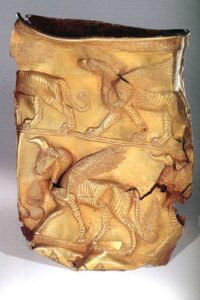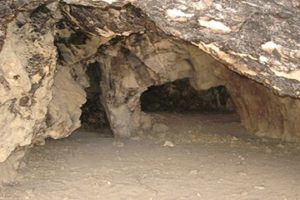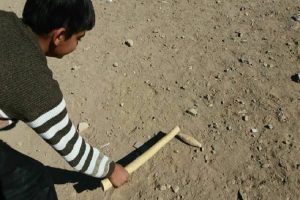Gilan, with its ancient civilization, is full of ancient expanses. One of these areas is Rudbar that will take us to a hill called “Marlik”; a place in the distant past that was a base of a civilization that has disappeared in the dust of history. Objects obtained from that area shade light on its ancient civilization.
Marlik civilization dates back to the Paleolithic era. This hill had a precious and unique treasure hidden in its heart, hidden from the eyes for centuries. Marlik is a rocky hill located on the eastern bank of Sefidroud and has a spectacular view of Goharroud Valley. Its soil is moist, and its air is pleasant and mild. The longevity of this hill is three thousand years old. Marlik is derived from the name of a tribe called “Amard,” who were widespread in that part of Gilan in distant millennia and had a long-lasting and advanced culture and civilization. There are other references for the nomenclature of Marlik, which may have little scientific basis.
The beginning of the identification of Marlik Hill and the civilization hidden in its heart goes back to 1340 (solar calendar), 1961 AD. In those years news spread about the discovery of small and ancient artifacts in Marlik, by the natives, following which a group of archeologists under the supervision of the late Ezzatollah Negahban, a famous archaeologist of Iran, excavated that area and found astonishing and unique findings. They had made their way to an ancient civilization, and very soon, they found statues and beads and the objects found inside it were among the other finds of Negahban and the team of archeologists who accompanied him. Artifacts and evidence were also found from an old cemetery. Artifacts and signs were also obtained from an old cemetery. Fifty-three tombs and 25 gold cups have been discovered in Marlik.
But who did those works belong to? The more common view is that those works are the remnants of the ruler who ruled in that area in the second millennium BC and like many other civilations, they buried objects with their dead; Objects such as bowls, cups, clothes, tiny statues, and many other examples. One of the most important discoveries of Marlik Hill is a precious and beautiful golden cup, which is now known as the “Marlik Cup” and is kept in ancient Iran’s Museum. This cup is considered a symbol of the Iron Age. It is 18 cm tall, and an image of a tree is carved in the middle of the cup. Two winged cows can be seen on both sides of the cup.

Regarding the belief of the Marlik civilization people, it is worth saying that they worshiped natural elements, especially the sun. The image of the sun with a triangular and geometric figure can be seen on the bottom of many Marlik cups and bowls. They believed in life after death and buried objects with their dead. Signs of burial with horses, helmets, and war clothes have also been seen in the Marlik cemetery. Another point is the similarity of the works obtained in Marlik with the results of the Silk Kashan civilization, To the extent that archaeologists consider these two civilizations as one; in other words, the Marliks were nomads who came to Silk after the Assyrian attack, and then founded a new civilization by joining the Medes. It is easy to find the way and reach Marlik Hill. Marlik’s view can be seen from the village of Nesfi River in Rudbar,Gilan, and the pleasant breeze blowing from that side is a good guide for tourists and visitors.










